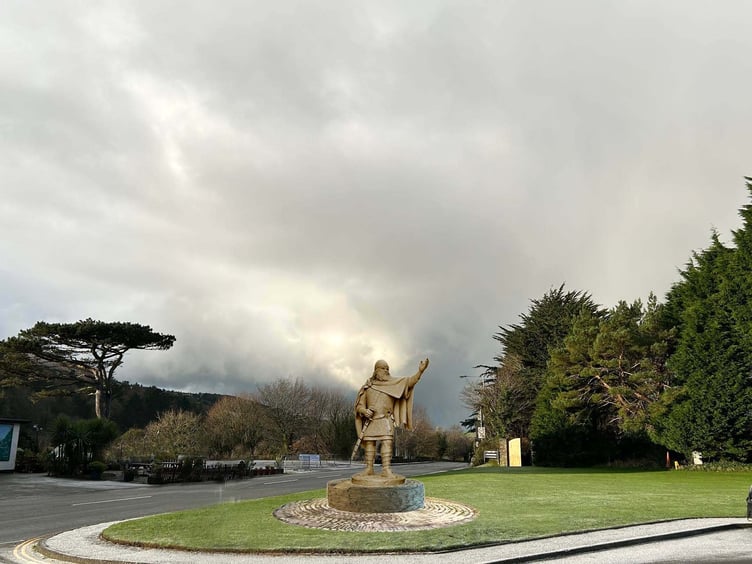Proposals for a new statue of King Orry next to Tynwald Hill has been recommended for refusal by a planning officer.
The bid, submitted earlier this year by President of Tynwald Laurence Skelly, sparked significant debate.
Manx National Heritage (MNH) raised concerns regarding the potential risks and impact on the site’s archaeological and cultural significance.
The organisation argues the project could have substantial archaeological consequences, especially with the creation of a plinth, a pathway, and the necessary infrastructure, such as a buried electrical supply for lighting.
Tynwald Hill, located in St John’s, is one of the Isle of Man's most iconic landmarks, with deep historical and archaeological significance.
MNH has long advocated for Tynwald Hill to be recognised as a UNESCO World Heritage Site due to its international importance.
But it is not just MNH that has reservations as planning officer Paul Visigah has recommended the application be refused when the planning committee meets on Monday.
He said: ‘The proposal would introduce a visually assertive structure that would be perceived as visually and materially at odds with the established character and symbolic clarity of the nationally significant ceremonial landscape surrounding Tynwald Hill.
‘This risks undermining the visual and cultural primacy of the site.
‘The sculpture's scale, verticality, and illumination would disrupt the openness, horizontality, and visual coherence of the Tynwald Green landscape.’
Mr Visigah also had concerns about the impact on the area renowned for its historical importance.
He explained: ‘The development site lies within an area of known archaeological sensitivity, with recorded features including subsurface anomalies and burial-related structures.
‘While a geophysical survey has been submitted, it does not constitute a full archaeological evaluation and leaves several anomalies unverified.’
MNH previously raised similar concerns, worried such a development could disturb the fragile archaeological landscape, which could include undiscovered Viking and medieval remains.
‘MNH strongly recommends that the planning application include a thorough evaluation of the site, including geophysical surveys and test excavations,’ said Andrew Johnson, the Inspector of Ancient Monuments at MNH.
‘Given the rich archaeological heritage in the area, a careful and professional approach is essential to avoid unintended damage.’
The MNH report also raised questions about the historical accuracy of the proposed statue.
The figure of King Orry, often equated with Godred Crovan, a Viking king, is considered by some to be more myth than history.
While the legend of King Orry is popular in Manx culture, MNH noted that there is little concrete evidence to substantiate his association with the Isle of Man beyond the realm of folklore.
MNH warned that the sculpture could diminish the prominence of Tynwald Hill, as it would be almost as tall as the Hill itself.
It adds that the setting of Tynwald Hill could be disrupted by the presence of the sculpture, which could affect the appreciation of the monument's significance.
The application will be considered by the planning authority at its meeting on Monday, July 28.




.jpeg?width=209&height=140&crop=209:145,smart&quality=75)